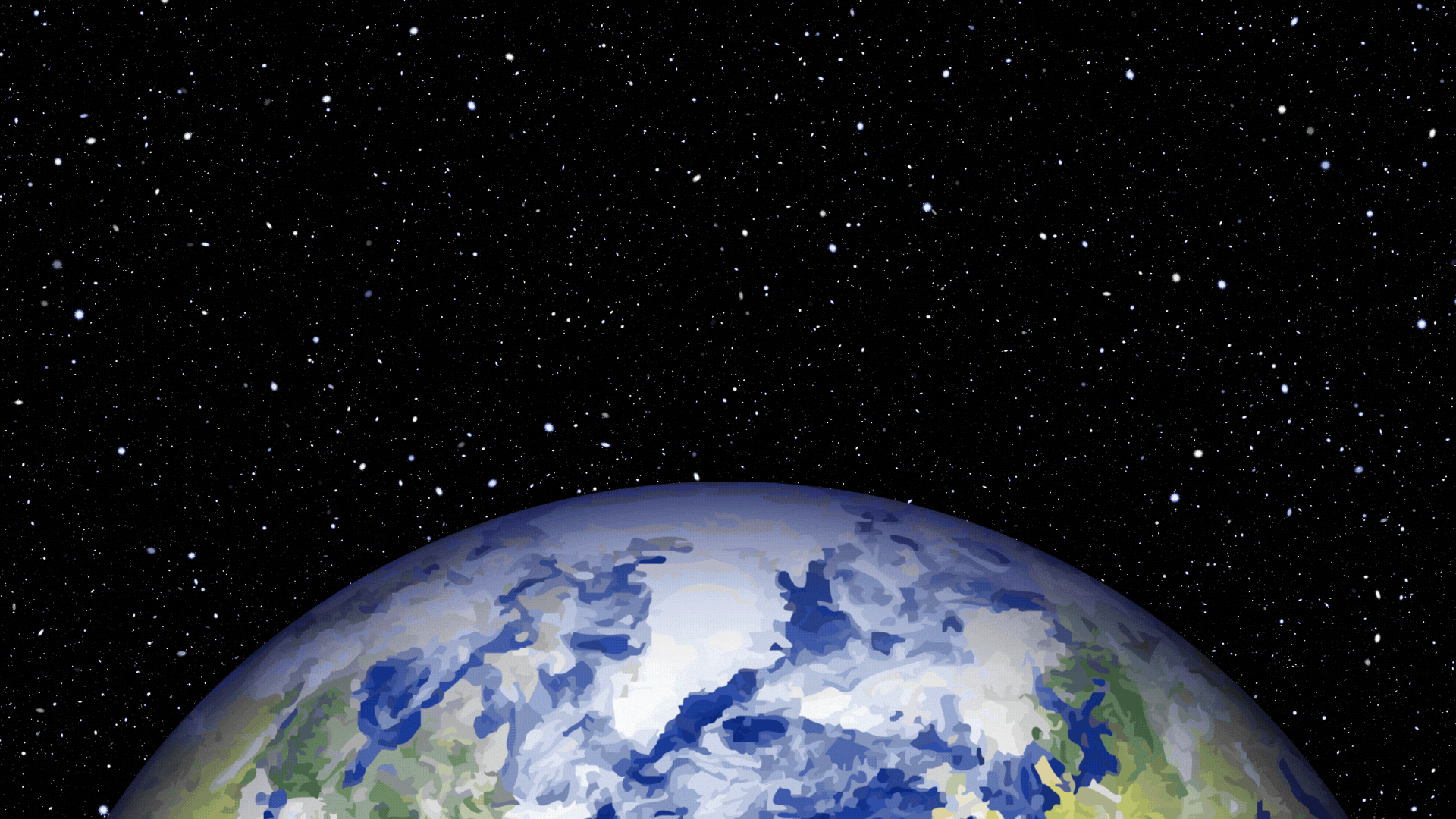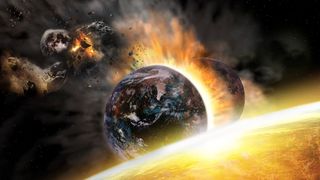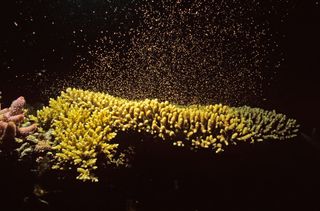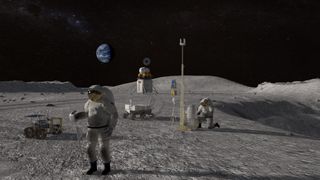What would happen if the moon disappeared?



The moon has been bound to Earth for the vast majority of its 4.5 billion-year dance around the sun. Astrophysicists speculate that the moon’s origin lies in an ancient collision, when a Mars-size object smashed into our planet, sending vast amounts of debris into space. The resulting materials coalesced through gravity to form what we now recognize as the moon.
We, and the rest of life on Earth, are so used to the moon’s presence that it’s hard to imagine what existence on Earth would be like if our natural satellite were to disappear suddenly.
But could it ever drift away or vanish? And what would happen if the moon disappeared?
Related: What would happen if Earth stopped spinning?
According to Noah Petro, project scientist for NASA’s Artemis 3 moon mission, few realistic astronomical events could cause such a dramatic event.
“I think the only plausible astronomical event that could untether the moon would be a large impact to the moon that breaks it up. … Similar to the large impact that is thought to have led to the formation of the moon, a large enough object could, in theory, break the moon apart,” Petro said.
Luckily, the sun and the planets have gobbled up most of the large objects in the solar system. A rogue planet entering the solar system from interstellar space could do the damage, but the chances of it colliding with the moon are extraordinarily thin, Petro said.
Breaking space news, the latest updates on rocket launches, skywatching events and more!

But let’s say it did happen, that the moon disappeared and Earth somehow remained relatively intact.
In terms of physical processes, one of the most noticeable disruptions would be the effect on ocean tides, which are responsible for coastal ecosystems. Marine life in intertidal zones would either die or adapt, and we would likely see the collapse of major ecosystems, which rely on intertidal zones for sources of food. Almost three-quarters of the world’s population lives within 31 miles (50 kilometers) of the ocean, and as such, billions of people either harvest or source their food from intertidal zones. The collapse of this ecosystem would be catastrophic for coastal communities.
In addition, tidal erosion at coastal margins is responsible for so much of how our coastlines are shaped. This process would greatly diminish, and the battle between land and sea would come to a (somewhat) truce.
Tides also play an important role in the overall heat regulation of the ocean. Colder, deeper oceanic water is pulled into bays and inlets at high tide, where it warms up. Oceanic tides also have a profound effect on greater ocean currents and therefore ocean circulation. These currents also have a feedback of driving overlying winds, which play an important role in regulating coastal climates. The sudden disappearance of tidal forces that drive these mechanisms would have a huge impact on the dispersal of heat and energy around the planet, changing temperature and climate into a place we would hardly recognize.
One of the most profound effects of the moon disappearing would take some time to manifest but it would have enormous consequences. The Earth’s axis currently sits at 23.4 degrees relative to our orbit of the sun. There is, however, a wobble in its spin cycle. But it takes 26,000 thousand years to complete a full cycle, which only deviates 2.4 degrees. Without the moon to stabilize it, this wobble could become extreme and erratic. In this scenario, predictable seasons would vanish, and the poles would sometimes be at the equator. The results would drastically alter Earth’s habitability, as the once predictable environment would become hostile to many forms of life.

Indeed, a number of species and ecosystems have developed a deep dependence on the physical consequences of the moon’s existence. After all, life has evolved with the moon and its cycles as an important environmental condition. Certain species’ life cycles or behaviors are based on the cycles of the moon. Some examples are bird species that rely on moonlight as a cue for migratory travel. Moonrise timing is also key for the synchronized spawning of corals in the Great Barrier Reef.
The moon also provides a source of nighttime light for nocturnal species, particularly for night-time predators. Evidence has shown that small mammals will limit their activity during a high moon (when there is more light) for risk of predation. Without this light, prey would get a serious boost over their predatorial adversaries.

Humanity’s relationship with the moon runs deep. Of course, the moon was the first extraterrestrial body humans stepped foot on, and its disappearance would greatly impact our space exploration goals. The moon provides a tangible stepping stone to greater future astronomical voyages, where we can test our equipment and learn more about the history of the solar system without straying too far from home.
The moon is a time capsule to the early solar system, Petro noted. By studying it, we can get clues about how the sun has evolved, the history of impacts on the lunar surface, and what it was like in the early stages of the solar system.
If we were to lose the moon, we would lose one of our best resources for understanding the Earth’s origins.
It also costs a lot of energy and resources to send things into space from Earth, as they have to escape our planet’s gravity. However, the moon is thought to be home to a significant amount of frozen water, which could provide crucial resources for future deep-space missions. By sourcing this water from the moon, we don’t have to spend our resources launching it from Earth’s surface.
It’s also important to consider the role of the moon in human culture. Innumerable myths, stories, paintings, poems and songs have been written about the moon. The lunar calendar plays a central role in religious celebrations across the world, and the disappearance of the moon from the sky would undoubtedly be a crisis for several prominent belief systems worldwide.
It’s fair to say that if the moon were to vanish from existence, the physical, biological and symbolic repercussions for the planet, life and people would be massive.